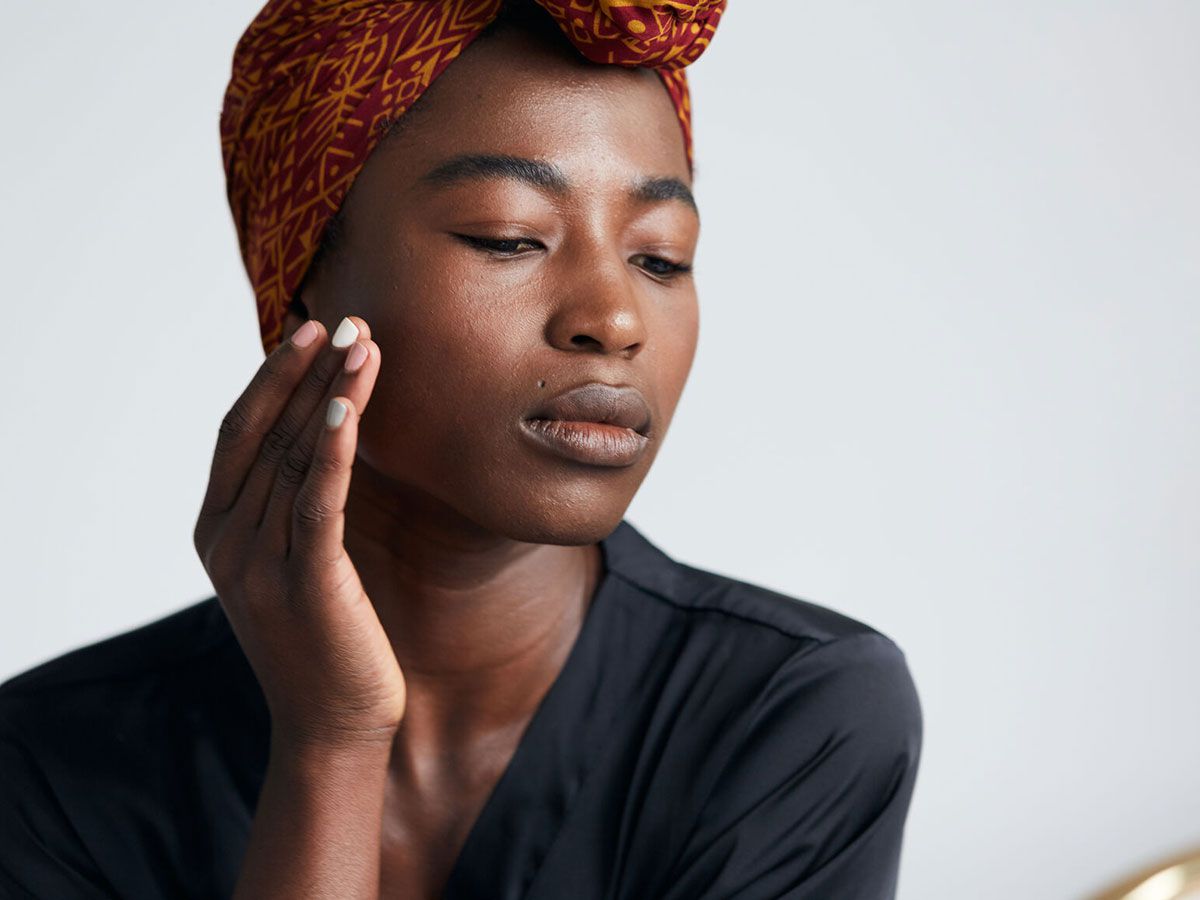Ask a Dermatologist: What Causes Dark Circles Under Eyes?
Let’s be honest: Waking up with dark circles is, well, not ideal. And yet it’s something that many people experience each and every morning. “Dark circles are a common concern among my patients, both male and female,” says dermatologist Courtney Rubin, MD.
While the internet might have you believe that a single, standalone approach will work to treat any and all dark circles, Rubin points out that there are myriad factors that contribute to their development, and understanding each is key to getting rid of them once and for all. “It’s important to figure out what the biggest contributing factors are, so you can determine the best treatment option,” she explains.
That’s what we’re here for. Ahead, discover all of the factors that cause dark under-eye circles so that you’re better prepared to treat them when they arise.
You’re Just Getting Older
A major reason why dark, sunken under-eyes become visible is due to a natural loss of volume in the facial area. “Underneath the eye is a special pillow of soft tissue called the SOOF (suborbicularis oculi fat),” explains Rubin. “Over time, this pillow of tissue shrinks and descends, leading to a decrease in the natural volume of the under-eye, and the creation of a shadow. This is one of the most common causes of dark circles.”
What’s more, she points out that, as we age, the delicate skin covering that area of tissue is also prone to losing collagen and elastin, which then leads to thinner skin and even more obvious volume loss and shadows.
To further explain, Reza Tirgari, MD, says that as volume diminishes under the eye and skin becomes thinner, the deeper capillary bed becomes more noticeable, which is why the under-eye area appears darker with age. “Fortunately, this can be corrected easily and quickly with specific dermal fillers that are made for this purpose,” he says, noting that, if that’s your goal, it’s especially important to see a practitioner who has skill and experience with the procedure.
You’re Dehydrated
Loss of volume doesn’t only happen with age, though. “Remember, water makes up about 60% of the human body,” Rubin says. “If you are seriously dehydrated, your body’s tissues will start to shrink, including your skin and the delicate tissue under the eyes.” So, if you’re, say, in your 20s, you might want to reevaluate your water consumption before automatically jumping toward cosmetic treatments. And, if you find that you do drink plenty of water, perhaps it’s the other beverages you indulge in that could be to blame. After all, as Tirgari says, caffeine, alcohol, and other diuretics may lead to dehydration and require even more water to recover from.
You’re Not Getting Enough Sleep
Here’s another fairly well-known cause of dark under-eye circles. And, unlike the age-related loss of volume, this can happen to anyone seriously lacking sleep. “It always helps to sleep at the same time every evening so that your body’s own circadian rhythm can get used to a regular schedule and prevent insomnia,” Tirgari says, noting that irregularities can lead eyes to become dark and/or baggy as a reflection of a hectic schedule.
You’re Straining Your Eyes
Straining your eyes doesn’t only hurt your vision. According to Parks, it can impact your under-eye appearance, too. “When you struggle to see something and strain your eyes, your blood vessels enlarge under your skin and show through as dark circles more prominently,” he explains, noting that it might be helpful to get your eye prescription checked to avoid further straining and, as a result, darkening.
You’re Experiencing Contact Dermatitis
Considering how thin your under-eye skin is, Rubin points out that it’s an especially delicate area for those with contact dermatitis (aka irritation from personal care products). “Unfortunately, dermatitis can then leave behind post-inflammatory changes that contribute to the appearance of dark circles, called post-inflammatory hyperpigmentation (PIH),” she adds. “The best way to combat PIH under the eyes is to address the cause of the dermatitis, whether it is seeking patch testing (a special type of skin test that helps reveal which ingredients you are allergic to) or modifying your skincare routine to avoid irritation.”
You’ve Got Seasonal Allergies
Allergies have such a common impact on the appearance of under-eyes that Rubin says there’s actually a name for it: “allergic shiners.”
“Basically, the inflammation from allergic conjunctivitis (allergies affecting the eyes), along with frequent friction and rubbing of an itchy eye area, can lead to broken blood vessels and bruising,” she explains. “As the bruising heals, pigmented hemosiderin (a component of hemoglobin) is left behind, which causes dark marks under the eyes.” Even without rubbing, however, the periocular inflammation that is associated with allergic conjunctivitis is enough to cause PIH by itself, according to Rubin.
You Have an Underlying Medical Condition
A less likely cause of dark circles is an underlying health condition. “There are conditions such as anemia, malabsorption syndromes, poor nutrition, vitamin deficiencies, hypothyroidism, and certain metabolic syndromes that can also lead to dark under-eye circles,” Tirgari says. “If these persist even with treatment, it’s always a good idea to have a thorough exam and get labs with your primary physician.”
It’s Just in Your Genes
At the end of the day, if none of the other causes resonate, your genes could be to blame.
“Among the most prevalent and unfortunately the most difficult to treat is simply genetics (this is called periorbital hyperpigmentation),” Parks explains. “There are always things you can try to help mask the appearance of dark circles, such as eye creams that include caffeine, retinol, algae, hyaluronic acid, and more. The Park Perfection 2-in-1 Instant Eye Lift is perfect for helping to mask dark circles immediately and nourish the area in the long term.”









